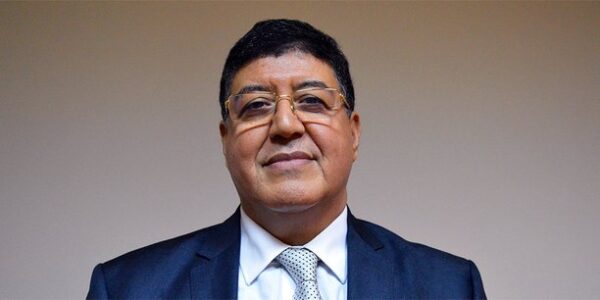By: Dr. Mohamed H’Midouche, former senior official of the African Development Bank – Author and CEO, Inter Africa Capital Group.
Context
Africa is at a decisive turning point in its energy history. Endowed with over 13,000 billion cubic meters of proven natural gas reserves (about 7% of the global total) and exceptional renewable potential, the continent has the necessary assets to reconcile energy security, industrialization, and low-carbon transition.
However, behind the ambitious announcements of large gas and green hydrogen projects, the reality remains mixed: many projects on the continent are still at the planning stage, lacking confirmed technical and financial partners. In a world marked by resource geopolitics, market volatility, and capital scarcity, the challenge now is to transform this potential into bankable projects capable of attracting sustainable and inclusive financing.
Gas: LNG and pipelines, integration levers
Gas remains the backbone of African energy strategies. With Algeria, Egypt, and Nigeria as heavyweights in LNG, the continent already accounts for over 10% of global trade. Nigeria LNG, with its Train 7 (12 Mt/year) under construction, demonstrates the willingness to increase exports, even though financing and security in certain production areas pose persistent challenges.
Regional pipelines are integration vectors: the 7,000 km Nigeria–Morocco Atlantic Gas Pipeline (G2A), which is set to connect 13 ECOWAS countries, symbolizes the ambition to create an energy corridor for West Africa and beyond. Similarly, the trans-Saharan project (TSGP) Nigeria–Niger–Algeria could connect Sub-Saharan Africa to the European market. In Southern and Eastern Africa, projects like Rovuma LNG in Mozambique (estimated cost: $20 billion) demonstrate the potential, but also security risks, such as in Cabo Delgado, which slow down their execution.
Green Hydrogen: Building Ambitions
Green hydrogen is gradually emerging as the fuel of the future. Several African countries have launched roadmaps: Morocco, with green ammonia pilot projects led by OCP and international consortia; Egypt, aiming for up to 8 GW of electrolysis in the Suez Canal Economic Zone; Namibia, with the Hyphen project ($9.4 billion) aiming to export 300,000 tons of green hydrogen annually by 2030; and South Africa, with the Hydrogen Valley and the Boegoebaai hub. However, the majority of these initiatives are still in the preparation and financing search stage. The realization will depend on the ability to create bankable projects, combining regulatory stability, infrastructure, and revenue security.
Transversal Challenges: Financing, Security, and Integration
a) Financing: Africa must attract capital in a fiercely competitive global context. Hydrogen projects require massive initial investments (between $1,000 and $1,500 USD/kW installed), necessitating the use of blended finance, combining public capital, multilateral guarantees, and private investors.
b) Security: From the East (Mozambique) to the West (Niger Delta), and through certain Sahelian areas, securing infrastructure remains an essential prerequisite.
c) Regional Integration: African energy markets (WAPP, EAPP, SAPP, CAPP) and the AfCFTA provide a framework to harmonize rules and promote project bankability.
d) Sustainability: International investors increasingly demand ESG standards, conditioning their participation on governance, transparency, and local benefits assurances.
Illustrative Project Mapping
i. In Operation: Idku & Damietta LNG (Egypt), Coral Sul FLNG (Mozambique), NLNG (Nigeria).
ii. In Development: Train 7 NLNG (Nigeria), Rovuma LNG (Mozambique), GTA (Senegal–Mauritania), Hyphen (Namibia), Morocco and Egypt H₂ projects.
iii. In Planning / Pre-financing: Nigeria–Morocco Atlantic Gas Pipeline, TSGP (Nigeria–Niger–Algeria), Hydrogen Valley (South Africa), H₂ projects in several African countries.
This diversity illustrates a reality: Africa is progressing, but at different speeds depending on regions, project maturity, and financing availability.
Strategic Perspectives
Africa has a unique energy potential that could position it as a global gas-hydrogen hybrid hub. However, the real battle is not in project announcements, however ambitious they may be. It lies in the ability to transform this potential into bankable and secure projects capable of attracting the necessary financing in a rapidly changing world.
To achieve this, it will be essential to:
- develop integrated clusters combining gas, renewables, hydrogen, and local industries (fertilizers, steel, chemicals);
- structure mixed financings with revenue guarantees and strong purchase contracts;
- strengthen regulatory and social frameworks to maximize local benefits;
- align projects with AfCFTA and regional power interconnections;
- ensure transparent governance and rigorous ESG standards compliance.
By avoiding an extractive model solely focused on exports and making gas and hydrogen catalysts for industrial and inclusive transformation, Africa can build a sustainable, attractive, and energy sovereign future aligned with the aspirations of Agenda 2063.


